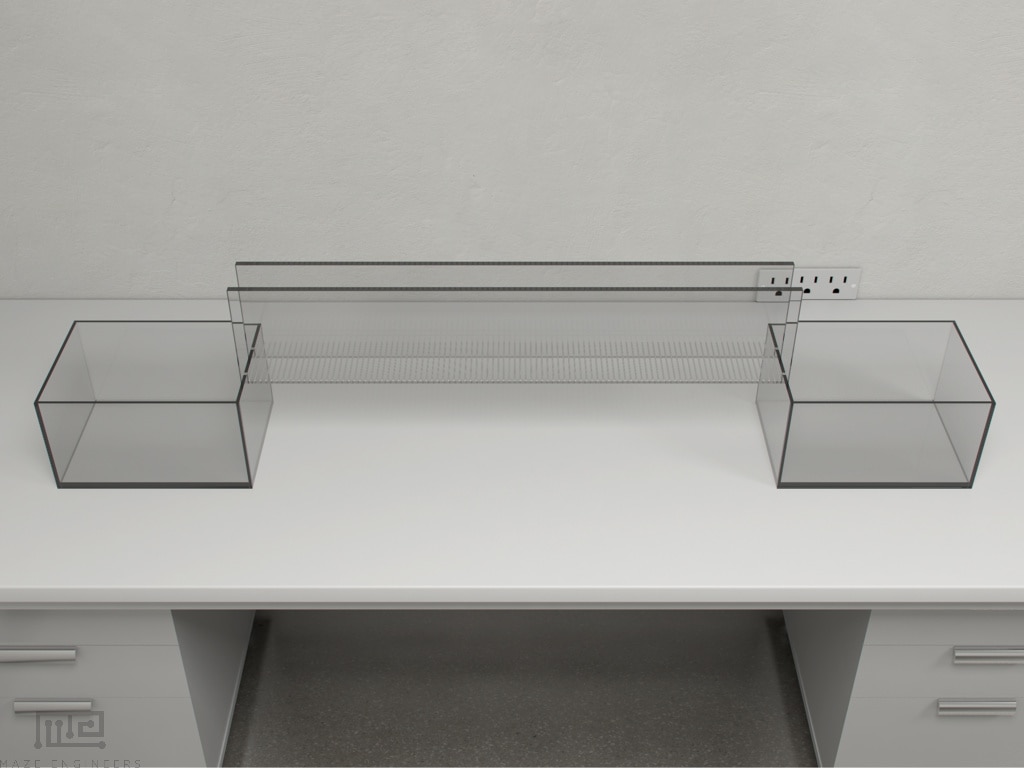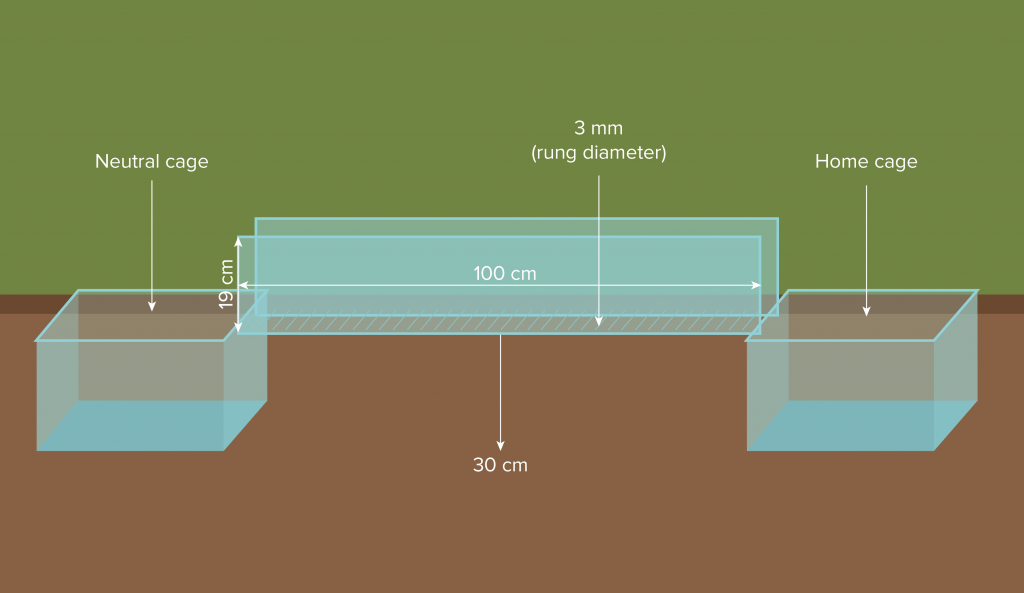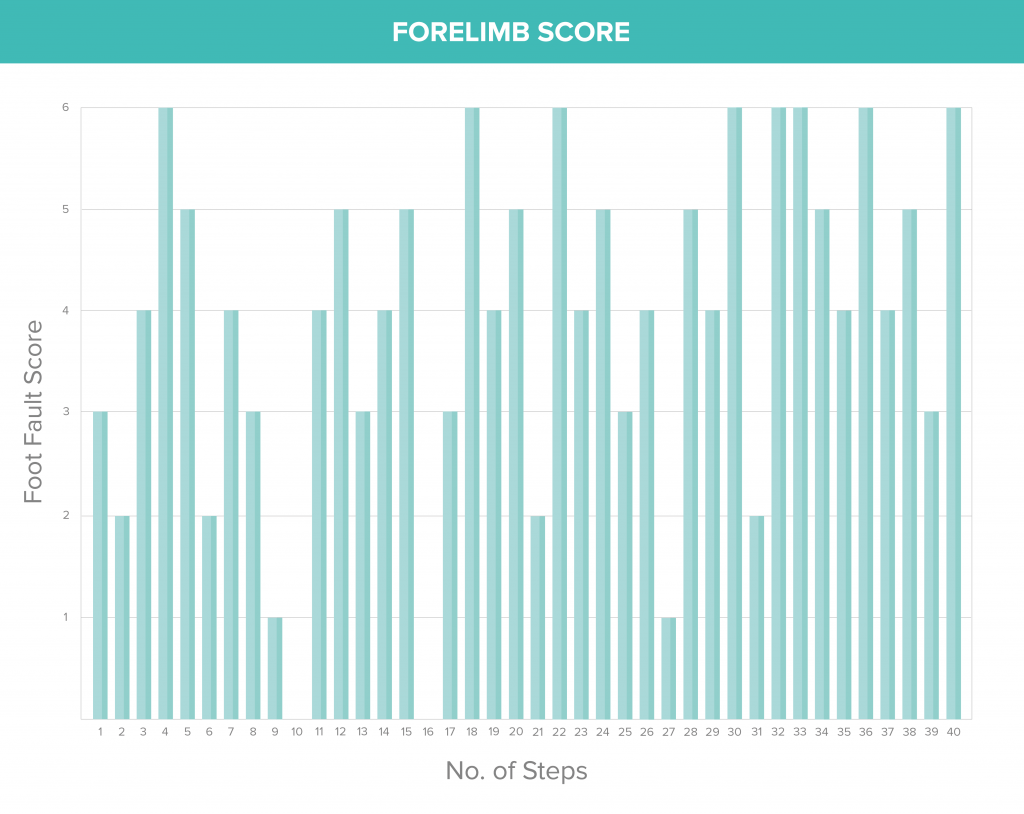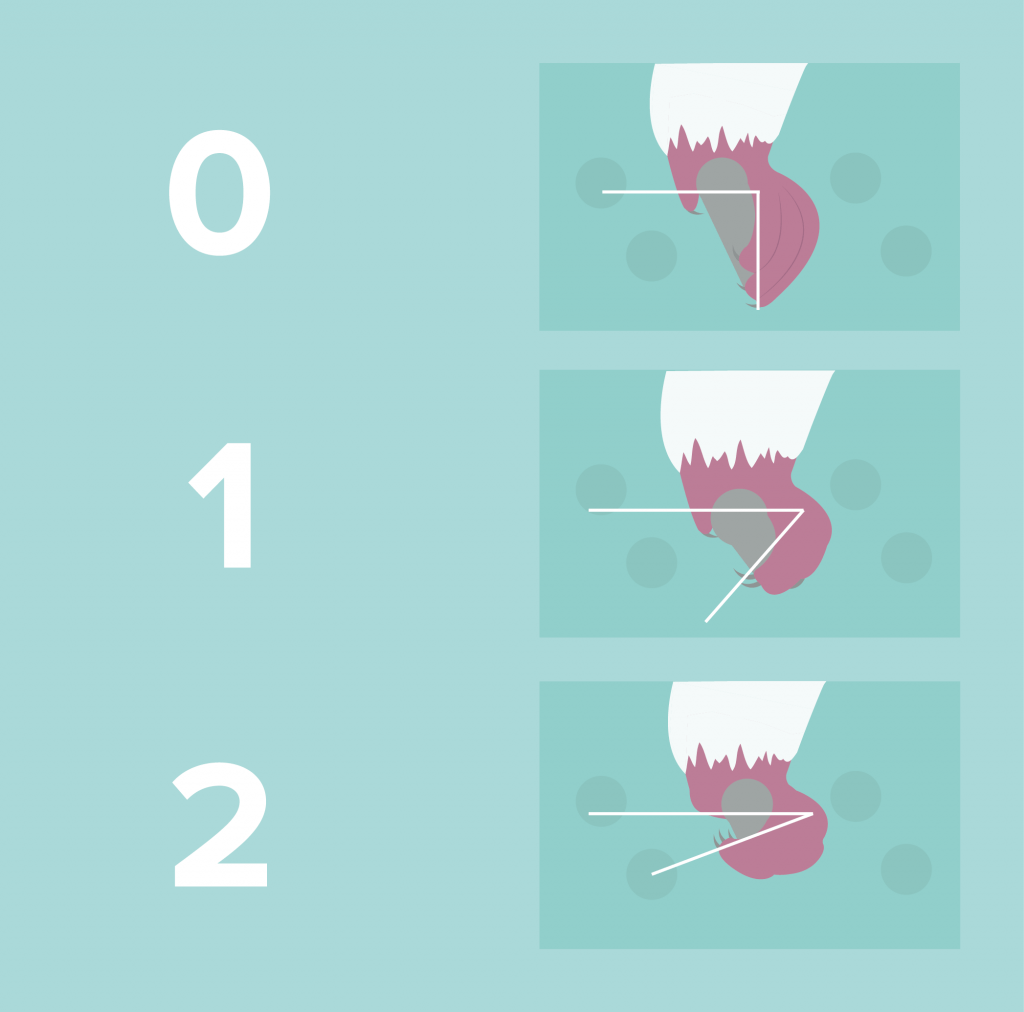Description
The Horizontal Ladder test is a motor and coordination test for evaluating skilled walking for rodents such as mice and rats. Steps are counted and classified as either correct/functional paw placement, a slip, or a miss. Fore & hind-limb coordination can be assessed further by removing individual ladder rungs to evaluate how the rodent targets individual rungs.
The animals are required to walk on a horizontal rung ladder spontaneously with varied spacing between rungs. The MazeEngineers horizontal ladder allows for the removal of individual rungs. Flexible and made to clamp to end plates to allow for aversive or rewarded locomotion. Clear walls allow for easy video recording using Noldus EthoVision® XT or ANY-Maze.
Price & Dimensions
Mouse Ladder Only
$ 495
+S&H- Materials for the corridor walls: Transparent acrylic
- Wall height: 15cm
- Length: 60cm
- Thickness: 3/8 in
- Bars Length: 10 cm to accommodate 8 cm width of ladder.
- Bar Diameter: 0.3 cm
- Drilled holes in regularly spaced 1cm intervals allowing for multiple patterns of bar insertion.
- Bar location: 1cm above the base of the wall
Rat Ladder Only
$ 535
+S&H- Materials for the corridor walls: Transparent acrylic
- Wall height: 20cm
- Length: 100cm
- Thickness: 3/8 in
- Bars Length: 15 cm to accommodate 13 cm width of the ladder.
- Bar Diameter: 0.3 cm
- Drilled holes in regularly spaced 1cm intervals allowing for multiple patterns of bar insertion.
- Bar location: 1cm above the base of the wall
Full Package w/Two Tubes (Mouse)
$ 1250
+S&H- Mouse Ladder
- Start and End basins: Dimensions: 25cm x 25cm x 20cm (L x W x H)
Thickness: 3/8 inch
Full Package w/Two Tubes (Rat)
$ 1390
+S&H- Rat ladder
- Start and End Basins: 30cm x 30cm x 30cm (L x W x H)
Thickness: 3/8 inch
Documentation
Introduction
The horizontal ladder is used in ladder rung walking test to evaluate motor function which was originally introduced by Metz and Whishaw (Metz and Wishaw., 2002).[i]
The locomotion of rats is analyzed using the horizontal rung ladder. To assess skilled walking in rats (and mice as a later adaptation [ii]), the function of both forelimb and hindlimb should be monitored. Limb placing, stepping, coordination and other aspects are checked for quantitative and qualitative assessment.
The animals are required to walk on a horizontal rung ladder spontaneously with varied spacing between rungs. Changes in the spacing are often utilized so that the animals do not acclimatize and limit the efficacy of the experiment by learning. The efficiency of the test to determine spinal cord injury or other neurodegenerative diseases is increased by using both quantitative and qualitative measures of motor function. The use of compensatory strategies, like a misstep or compensatory step in response to another limb’s misplacement, is also taken into consideration for accurate evaluation.
Impairments can be seen for animals with motor system injury in the ladder rung test. The task is easy to perform as it requires minimal training. The task serves as a good measuring tool for chronic deficits and long-term treatments.
Apparatus & Equipment
The side walls of the horizontal ladder are made of clear Plexiglas that are 1 m in length and 19 cm high measured from the height of the rungs. The metal rungs (diameter 3 mm) are inserted to create a walking floor. The minimum distance between the rungs should be 1 cm. The ladder is elevated 30 cm above the ground with two cages; a neutral cage at the starting point and a home cage at the other end.
Ideally, the width of the alley should be 1 cm wider than the width of the animal so that it can’t turn around. The horizontal ladder has two walls with holes connected by rungs (rods). These rungs (rods) are removable. The width of the ladder is adjustable (distance between two walls) according to the size of the animal so that an animal cannot turn around.
The difficulty of the task can be modified by changing the spacing of the metal rungs. The animals will be able to learn and anticipate if a regular pattern is maintained. An irregular pattern will prohibit the animals from getting acclimatized. A regular pattern will have an even spacing of 2 cm between the metal rungs. The difficulty can be modified by making an irregular pattern for each trial; the distance of the rungs can be varied from 1 cm – 5 cm. Five similar irregular patterns can be made for every animal to standardize the experiment, keep the difficulty level constant and get results which can be compared efficiently.
For automated foot slip scoring, ConductVision utilizes a two camera system to simultaneously take videos from the top and side to score foot slips and the extent of the slip.
Training Protocol
The animals are trained to cross the ladder from the neutral cage to the home cage which has littermates in it to provide positive reinforcement. Each animal should cross the ladder in the same direction five times per session. The animals will get habituated with the height during the training, so this will not cause anxiety during the experiment.
Sample Data
Foot Fault Scoring (Qualitative)
Only consecutive steps of each limb are scored after analyzing the video recording. The last step before a gait interruption or a stop and the first step after an interruption is not scored. The final stepping cycle performed at the end of the walking ladder is also excluded from scoring. The scoring is taken in terms of limb placement or limb protrusion in the case of a miss.
A 7-category scale is used to score the paw placement on the rungs. This includes the position of the paw at the time of placement or errors in placement accuracy. The following chart illustrates the 7-category scoring scale:
| (0) Total Miss | 0 points are given in case the paw completely misses the rung and fall occur. A fall is described as a paw falling deep between the rungs which disturb the balance. |
| (1) Deep slip | The limb was initially placed on a rung but slipped when weight-bearing which caused a fall. |
| (2) Slight slip | The slip occurred in the similar fashion as with score 1, but it didn’t cause a fall or interrupted the gait. Instead, the animal was able to maintain balance and continue a coordinated gait. |
| (3) Replacement | The limb was placed on a rung, but before it could start weight bearing, it was lifted quickly and placed on another rung. |
| (4) Correction | The limb was aimed for a rung, but it was placed on another one without touching the one aimed initially. A 4 score can also be earned in case a limb is placed on a rung but quickly repositioned to another while staying on the same rung. |
| (5) Partial Placement | The limb was placed on the rung with either the wrists/digits of the forelimb or toes/heel of the hindlimb. |
| (6) Correct Placement | The midportion of the limb is placed on the rung with full weight support. |
The lowest scores are recorded if different errors occur at the same time. For example, if a limb is placed on a rung and quickly lifted to replace the rung (score 3), and then slipped and fell between the rungs (score 1), the lowest score (1) will be recorded. In the case of a fall, only the limb responsible for the error will be scored, and no other limb will be rated until the animal has repositioned all the limbs. For accurate analysis, error scores of five trials can be averaged.
Score for each limb is calculated separately in each trial. Here’s a sample chart for one trail of a single forelimb. Similar charts are created for the other limbs as well.
Foot Placement Accuracy Analysis (Quantitative)
The number of errors is counted using the foot fault scoring system. An error can be defined as any score of 0, 1 or 2 which means any kind of a fall or a slip. The number of errors and the total number of steps are calculated for each limb separately. From this data, the mean number of errors per step can be calculated, and average can be taken for five trails.
The data from the graph can be taken to calculate the mean number of errors per step for each limb. Let’s take the example of Left Forelimb:
- Total Step = 40
- Total Number of Errors = 8
- Error/Step = 8/40 =0.2
In the same way, the mean number of errors per step can be calculated for the remaining four trails.
Another quantitative analysis can be performed by calculating the average time taken by the animal to cross the length of the ladder rung. The time should start after the animal is placed on the rung, and to maintain accuracy, the time spent in a stop should be excluded.
Forepaw Digit Score
The forepaw digit scoring is recorded when a 6 is scored on foot fault scoring system, i.e. the paw is placed correctly with the midportion on the rung. A three-point scoring system is used which measures the extent to which the digits of the paw can be flexed while the forelimb is placed vertically on the rung.[i]
Strengths and Limitations
The ladder rung walking test:
- Allows spontaneous walking to be examined as there is no food or water deprivation for motivation.
- Requires accurate placement and grasping while stepping across the rungs, so both stepping and grasping can be analyzed simultaneously.
- Provides a challenge to ongoing locomotion due to the varied spacing between the rungs. This variation can be used as a challenge to both the ongoing locomotion and/or memory of the stepping pattern.
It is a vital strength of the task that it reveals subtle chronic impairments in both the forelimb and hindlimb, impairments that require forebrain control are unveiled. The irregular pattern of the task requires animals to adjust their stride, placement, and distribution of the body weight with each step. While normal animals can adjust to irregular patterns given few trials, animals with motor system lesions have limited ability to adjust. The animals also need to adapt their regular limb coordination for irregular rung distances. This means that the animals would have to quickly change their weight support in order to correct any limb placement error. Animals partially compensate for a limb placement mistake by using the intact limbs for weight support after a unilateral lesion. As a result, the test can gauge compensation by analyzing foot placement errors on the intact side.
After adult and neonate lesions to the motor system, the ladder-rung walking task has been shown to be sensitive to chronic movement deficits including rat models of stroke[i], Parkinson’s disease[ii], and spinal cord injury[iii]. The rung walking test can also detect changes induced by physiological factors like mild stress or even diet. The test involves weight-bearing steps, so caution is needed if severe spinal cord lesions are being tested.
As the test reveals even subtle motor deficits and compensatory movements, it is not only a great tool to assess loss and recovery of function due to spinal cord or brain injury but a valuable gauge of treatment approaches.
Summary and Key Points
- The Ladder Rung Walking Test is used to evaluate motor function and assess skilled walking in rodents.
- The animal walks on a horizontal rung ladder with varied spacing while a video recording captures the movements.
- A score of 0-6 is given per step for each limb, 0 means a total miss and 6 represents a correct placement.
- Quantitative analysis is performed by either calculating the errors per step or the time taken to walk the length of the ladder.
- The angle made by the digit during a correct placement determines the forepaw digit score.
- Subtle chronic impairments in both the forelimb and hindlimb are revealed by the test.
References
Metz G, Whishaw I:Cortical and subcortical lesions impair skilled walking in the ladder rung walking test: a new task to evaluate fore- and hindlimb stepping, placing, and co-ordination.Journal of Neuroscience Methods 2002, 115: 169–179.
Farr TD, Lui L, Colwell KL, Whishaw IQ, Metz GA: Bilateral alteration in stepping pattern after unilateral motor cortex injury: a new test strategy for analysis of skilled limb movements in neurological mouse models. Journal of Neuroscience Methods 2006, 153: 104–113.
Miklyaeva, EI., Castaneda, E., Whishaw, IQ. Skilled reaching deficits in unilateral dopamine-depleted rats: impairments in movement and posture and compensatory adjustments. J Neurosci. 14, 7148-58 (1994).
Emerick AJ, Kartje GL. Behavioral recovery and anatomical plasticity in adult rats after cortical lesion and treatment with monoclonal antibody IN-1.Behav Brain Res.2004;152:315–325.
Faraji J, Metz GA. Sequential bilateral striatal lesions have additive effects on single skilled limb use in rats.Behav Brain Res.2007;177:195–204.
Merkler D, Metz GA, Raineteau O, Dietz V, Schwab ME, Fouad K. Locomotor recovery in spinal cord-injured rats treated with an antibody neutralizing the myelin-associated neurite growth inhibitor Nogo-A.J Neurosci.2001;21:3665–3673.







